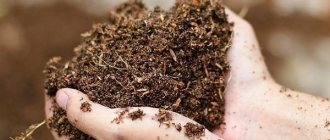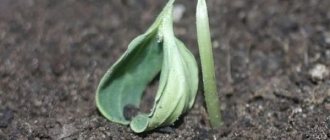There is probably not a single vegetable garden or greenhouse where cucumbers do not grow. And when they also bring a rich harvest, bearing fruit all season long, this is a great joy for any vegetable grower. The creation of certain conditions will serve as a guarantee for this.
This takes into account both the variety and the method of sowing, the time for transplanting into a garden under the open sky or a greenhouse, fertilizer, and moisture. This vegetable is very demanding. But even if all the necessary conditions are met, you may be left with a small harvest due to improper planting.
What scheme should you use to plant cucumbers, how does it affect the yield?
A good harvest is possible thanks to properly planned planting. In fact, there are many schemes for growing cucumbers. It all depends on how, where and what varieties are planted. This can be sowing with seeds or planting seedlings, using open ground or a greenhouse, horizontal or vertical arrangement.
Also, great importance is attached to the nutritional value of the soil. If it is saturated with fertilizers, then the bushes can be planted more densely. The dimensions of the bed also depend on the chosen method.
What results from non-compliance with the planting scheme?
With the best of intentions, inexperienced gardeners place cucumbers too compactly. As a result, plants spend energy not on producing fruits, but on competing with neighbors in the garden, fighting for living space. Planting density causes many problems.
- A favorable atmosphere is created for the development of putrefactive processes and fungal diseases.
- Insect pests feel at ease in dense thickets.
- On the crop, flowers are formed predominantly of the male type - “barren flowers”.
- The bush simply lacks all vital resources - water, light and nutrition.
The other extreme is not much better - planting seedlings at too great a distance. On the one hand, there is simply an irrational use of the garden space, which significantly reduces the chances of a good harvest. Secondly, with this approach, a native of humid subtropics, a cucumber bush, accustomed to scattered moving partial shade, finds itself in the sun.
Depending on the variety, cucumber bushes have different growth rates, climbing patterns, and growing season duration, which affects the size of the plant and requirements for free space.
Typically, seed manufacturers indicate on the packaging the optimal planting density of plants of a particular variety; for cucumbers this is no more than 3-4 roots per 1 m².
What determines the distance between rows and plants?
Experienced gardeners know that the density of plants in a garden bed depends on the method of cultivation: the distance between cucumber bushes in a garden bed is from 30 to 60 cm.
Growing cucumbers vertically on supports is more economically profitable, since without compromising quality, the yield per unit area increases almost 2 times.
In well-filled beds with organic matter, it is possible to grow cucumbers with a minimum interval of 30 cm. On poor soils, bushes are placed more freely - the plants make up for the lack of root nutrition through photosynthesis.
Planting density depends on the size of the bush, the individual characteristics of the variety or hybrid:
- strength of growth;
- tendency to branch;
- duration of the growing season.
The vertical method of cultivation makes it possible to level out the inherent characteristics of varieties by regularly forming a bush; with a sufficient amount of nutrients, it is possible to “thicken” the plantings. When growing horizontally “in a spread”, the formation of cucumber vines is virtually impossible - the practice is to plant bushes at a distance of at least 50 cm, regardless of the variety and quality of the soil.
From the video you can learn one of the schemes for planting cucumbers in open ground and learn recommendations about technology.
The dangers of illiterate placement of bushes
An incorrect arrangement of bushes will lead to negative consequences. For example, if you plant cucumbers too often, the following troubles may occur:
- The seedlings will stretch out due to lack of light (reduced yield as a consequence).
- Incorrect or insufficient air circulation will provoke stagnation or excess evaporated moisture (the appearance of fungi and the proliferation of pests as a result).
- High humidity will lead to rotting of flowers or the appearance of empty flowers (low yield as a consequence).
When cucumbers are planted too sparsely, the land is used irrationally, which is not at all beneficial from an economic point of view.
Regardless of what cucumber planting scheme is used, it is important to provide good light to the plants during the day. For this purpose, an east-west arrangement of beds is usually used.
The place for planting cucumbers should have good lighting.
What are the consequences of incorrect distance between seedlings?
If the distance between the cucumbers during planting is very close, then the plants become very crowded, as a result they begin to fight with each other for “a place in the sun.” At the same time, the shoots of cucumbers do not receive full development, become frail, weak, and produce a lot of barren flowers.
In addition, such a situation entails such troubles as the development of rot, fungus, damage by harmful insects and other diseases.
The most interesting portal about the green world - https://zeleniymir.org
If you plant seedlings at an inappropriately far distance from each other, then your plot of land will be used irrationally, which means loss of a potential harvest.
How to properly grow cucumbers in a greenhouse and open ground
Planting options depend on weather conditions and crop variety. Early cucumbers grow well in open ground, but require protection from possible return frosts with a special covering material or film. To decide on a location, you also need to pay special attention to the method of pollination. Insect-pollinated varieties will produce crops only in the garden. Only self-pollinating species are suitable for greenhouses and greenhouses.
Cucumbers planted with seeds directly into open ground adapt well to weather conditions, the sprouts practically do not stretch, and there is no risk of seedlings dying during replanting. But the seedlings will begin to bear fruit faster. Various schemes are also used depending on the open ground or greenhouse. These schemes allow not only the optimal use of land, but also a rich harvest obtained in a comfortable way.
What should the soil be like?
Before planting cucumbers, it is necessary to determine the area where the greenhouse will be located and prepare the soil in advance. To do this, they dig it deeply, remove the roots of perennial plants and at least 5-7 cm of the top layer of soil, since pathogens and viruses of various diseases that can infect young plants accumulate in it. After removing plant residues, you can disinfect the soil using a 7% solution of copper sulfate. The soil must be enriched and fertile, with good absorption and throughput capacity, neutral or low acidity.
The soil mixture is prepared 20-30 days after processing the site. As practice has shown, it is better to plant cucumbers in a substrate of turf soil and fresh humus. To prepare it, use 45-55% peat, 25-35% humus or compost, 15-25% fertile soil and 10-15% wood sawdust scalded with boiling water. Add 10-15 g of superphosphate and urea, 250-280 g of sifted ash to a bucket of such an earth mixture; no nitrogen fertilizers are added.
When growing cucumbers in greenhouse conditions, only the seedling method is used. Since this plant does not tolerate transplantation well, in order not to waste time on adaptation and survival, it is advisable to sow the seeds for seedlings directly into peat cups, pots or bags. It is recommended to plant seedlings 25-27 days old with 4-5 leaves. The timing of its planting varies depending on the region, size and type of greenhouse.
What should be the distance between individual bushes?
There is also a general scheme that allows you to get a high yield. It is based on what varieties of cucumbers are used and how best to plant them. To answer the question of at what distance to plant cucumbers, you need to decide on a pattern. On average, an interval of 20 cm should be left between seedlings, and about 45 cm between beds.
With a vertical arrangement, it is more convenient to use two rows with a distance between them of about 100 cm. With the horizontal method, the bushes are tied to specially designed pallets using strong nylon thread or wire.
So, it is better to place 3–4 bushes on one square meter. Below is an approximate landing diagram:
Scheme of planting cucumbers in a greenhouse.
On a note! From the wall of the greenhouse to the bush you need to leave about 30 cm, but no less. This will help with good air exchange. Also, this method ensures optimal temperature conditions, because the walls quickly heat up and cool down, which can lead to either overheating and burning of the plant, or to freezing.
What cucumbers should I plant?
Today, there are a very large number of hybrids and varieties specifically designed for growing in greenhouse conditions. They are characterized by high and stable fruiting, compact bushes, and resistance to major diseases. When choosing a variety, preference should be given not only to high-yielding varieties with low light requirements, but to self-pollinating cucumbers that do not need pinching.
Some of the most popular are the late-ripening, high-yielding hybrids White Angel F1, Athlete F1, Hercules F1. They are resistant to many diseases and pests. The fruits are medium large, weighing 160-190 g, with high taste, universal in processing. However, they require artificial pollination or planting a pollinating variety nearby. For this, the high-yielding hybrid Emelya F1 is often used.
Particularly popular are mid-season varieties such as Relay, Willow, Moscow Greenhouse, Regatta, Spotresisting and hybrids Annushka F1, Dynamit F1, Pyzhik F1. They are self-pollinating and do not require care. The fruits are medium, weighing 100-125 g, with a good watery-sweet taste, dense, crispy.
Layout of cucumbers in greenhouses and greenhouses
Initially, you need to prepare a greenhouse (usually made of polycarbonate) or a greenhouse for the seedlings. A place on a flat area, or with a slight slope to the south, is better suited. Ventilation must be provided during particularly hot summer months.
The optimal conditions for the growth of cucumbers are warmth and humidity. There are many varieties of beds, but one or another option is selected according to the dimensions of the greenhouse. One of them is when the bed itself is located higher above the ground. The bottom is covered with drainage material. A mixture of soil and humus is leveled on top. The height is usually about 25-30 cm. The width is up to 100 cm, the length depends on the size of the greenhouse.
Here it is customary to use the following planting schemes:
- two-line (two-row);
- in a checkerboard pattern;
- single-line (single-row).
Below is a schematic diagram of methods for planting cucumbers in greenhouses and greenhouses.
Schemes for planting cucumbers in one and two rows, as well as in a checkerboard pattern.
The first involves planting two rows at once in one wide bed. The distance between cucumber seedlings in one row is maintained up to 40 cm, and between rows up to 50 cm. It is recommended to leave the gaps between the lines from 70 to 90 cm.
The planting density of plants is directly proportional to the dimensions of the greenhouse itself. Accordingly, the larger they are, the greater the distance between the bushes and the more favorable it will be for them.
So, for example, with a greenhouse width of 2 m, it will be convenient to plant as follows:
- from the walls of the greenhouse to the bush 20 cm;
- the distance between cucumber bushes in a greenhouse in one row is 40 - 45 cm;
- between rows 70 - 80 cm.
With a greenhouse width of 2.5 m:
- from the walls of the greenhouse 30 - 35 cm;
- between plants in one row 50 cm;
- between rows 80 - 90 cm.
With a greenhouse width of 3 m, you can plant three rows of cucumbers:
- from the walls of the greenhouse 15 cm;
- between plants in one row 50 cm;
- between rows 70 cm.
The checkerboard pattern is suitable for areas with a width of 2 to 3 m. Here the bushes are planted in two rows in a checkerboard pattern. When planting, the distance between cucumbers in the greenhouse is about 35 cm. The offset in the rows allows you to minimize the density of the beds. Cucumbers do not intertwine with each other during growth, and this, in turn, is very convenient when caring for and harvesting.
Another type of planting cucumbers in a greenhouse is single-line. It involves placing the bushes in one row at a distance of 20–40 cm, leaving about 70 cm between the rows themselves.
Each landing option has both its pros and cons. For example, a two-row allows you to plant a larger number of bushes, and, accordingly, harvest a larger harvest. With a checkerboard pattern, good illumination is ensured, and, consequently, good growth. Single-row is popular due to its ease of care for each plant.
It is better to choose a scheme based on the characteristics of the variety chosen for cultivation. Here such indicators as the abundance of leaf mass, the height of the bushes, the size of the side shoots and their number are taken into account.
Tall hybrid crops are preferably planted in single rows. But varieties of cucumbers with a small number of branches and long fruits like a checkerboard pattern. This way each bush receives the necessary light without interfering with each other.
Check out another cucumber planting scheme. This option is suitable for both open ground and greenhouses.
Schemes for joint planting of vegetables with cucumbers
If several vegetables are planted in one greenhouse at once, then tall cucumbers with a large green mass are planted in the northern beds so that they do not shade the rest of the vegetables. For example, in a scheme for planting cucumbers and peppers in a greenhouse, you can create a wide two-row bed of cucumbers along the northern wall, and plant peppers to the south in single-row or double-row beds.
In greenhouses where cucumbers and tomatoes are planted at the same time, the optimal planting scheme will look like this:
- cucumbers in a two-row bed on the north side;
- tomatoes in a two-row bed on the south side;
- in greenhouses 3-4 m wide, you can set up a two-row bed with peppers and eggplants in the center.
Use the correct arrangement of bushes in the greenhouse, and cucumbers will delight you with an excellent harvest and a lesser tendency to diseases associated with lack of ventilation, nutrition or moisture, which are observed in overly dense plantings.
The most common mistakes when landing
No one is immune from making mistakes. So planting cucumbers cannot be done without them. The main ones:
- overexposure of seedlings;
- density in the bed;
- incorrect crop rotation.
The first mistake is failure to meet the disembarkation deadlines. The optimal time is a month after seed germination. If the seedlings are left too long, a nutritional deficiency occurs, which leads to wilting when planted in the ground. Too dense planting leads to small fruits, poor harvests, and the appearance of fungal diseases.
Re-planting of the fruit, i.e. Growing the same crop in the same place will lead to deterioration and reduction in yield. Cucumbers will become more vulnerable to disease. It is also not recommended to plant them after pumpkin crops.
But the location where tomatoes, legumes, cabbage or greens grew last season is considered favorable. Having made certain mistakes, it is important to correct them in time and gain valuable experience from this. After all, only those who do nothing make mistakes.
To summarize, we can say that the choice of planting scheme for cucumbers depends on a number of factors. These include the timing of crop ripening, frost resistance, pollination method, and others. Through trial and error, each gardener will find the best option that suits him.
Planting methods
Determining the distance depends on the method of planting the cucumber crop. There are two main ways:
- seeds;
- seedlings;
When planting seeds without seedlings, use both dry and pre-soaked seeds in a nutrient solution. Cucumbers do not grow well in very acidic soils. They prefer alkaline, non-waterlogged ones. Therefore, if the soil does not meet the standard, you need to add fluff ash or lime to the garden bed. The root system of cucumber crops has weak sucking force. Therefore, soil moisture must be maintained at 70-80%HB.
Can be sown in open ground at soil temperatures of 15°C-17°C. The prepared holes are placed in 1-2 rows. The sowing depth is 1-2 cm. After the sprouts appear, you need to thin out. This will determine the distance between the bushes - 50-60 cm.
Seedlings are usually grown using the cassette method. For soil, soil mixtures, humus substrates, turf soil and sand are used. A 1.5-2 cm depression is made in each cell. The top is sprinkled with soil. Water is spilled copiously. Seed germination temperature 18°C -24°C. If it is lower, the seeds take a long time to germinate due to the dense shell.
After 22 days of age, the plants are transplanted into half-liter containers. For good development of the root system, it is necessary to constantly maintain water, temperature and light balance. Seedlings are planted directly into open ground at a soil temperature of at least 10°C -12°C.
Planting scheme for a warm bed
For a warm bed, a planting pattern is chosen based on the geometry of the structure. Traditionally, warm beds are built in trenches or raised, in boxes. The soil of a warm bed, well filled with organic matter, allows for some thickening of planting: instead of 1 row, a strip of 2 rows is planted, the distance in the row is 25-30 cm, between the rows - 50-60 cm.
Due to the decomposition of organic matter, the soil of a warm bed warms up faster: a bed equipped with a light shelter on arcs can produce a cucumber harvest 2-3 weeks earlier.
Greenhouse preparation: protection from pests and diseases
Why is a polycarbonate greenhouse recommended for growing these vegetables? Firstly, it is easy to create the desired microclimate for plants: there are no cracks, ventilation is organized correctly, and the sun's rays do not burn the leaves. Secondly, the polycarbonate does not need to be removed for the winter, and therefore spring work goes faster, and heat-loving cucumbers can be planted earlier. This is good, but there is still a lot of work to be done. At least you can forget about drafts from cracks and the scorching sun.
But you need to prepare the greenhouse thoroughly. Like a tropical vine that came to us from a completely different climate, this vegetable is extremely sensitive to all kinds of diseases and pests. Well, he doesn’t have the necessary protection in his genetics, because a couple of thousand years have not yet passed since this culture took root on Russian lands.
So, if you have already grown cucumbers and they were sick, completely replace all the soil this year. And disinfect the greenhouse itself with a solution of bleach: dilute 400 g of lime in 10 liters of water, then simply whitewash the entire internal surface of the structure, paying special attention to the frame.
Planting cucumbers according to the classic scheme
All advice from agronomists boils down to the general opinion: per 1 m² of bed there should be from 2 to 4 bushes (depending on the variety and method of plant formation).
There are various techniques for arranging cucumber beds. The starting point is the classic planting in a row with the vine placed on a support:
- planting depth - 4-5 cm;
- the distance between plants in a row is 40-50 cm;
- the distance between rows is 80-100 cm.
The approach to planting density is somewhat different in the case of direct sowing in the ground. The general recommendations of experienced summer residents boil down to one thing: ungerminated seeds must be planted with a reserve for poor germination and other unforeseen circumstances.
After the appearance of the first true leaf, weak plants are removed.
When to sow cucumber seeds for greenhouse seedlings
When determining the timing, it should be taken into account that seedlings are transferred into closed ground approximately 3-4 weeks after sowing the seeds (when 4-5 true leaves grow). By this time, the greenhouse should have suitable conditions for young plants.
The climate is different in different regions. Therefore, if we are talking about structures without additional heating, you should focus on approximately the following dates for planting seeds in the spring:
- southern Russia: early March;
- northern Russian Federation, Siberia: mid-April;
- center of Russia: early April.











